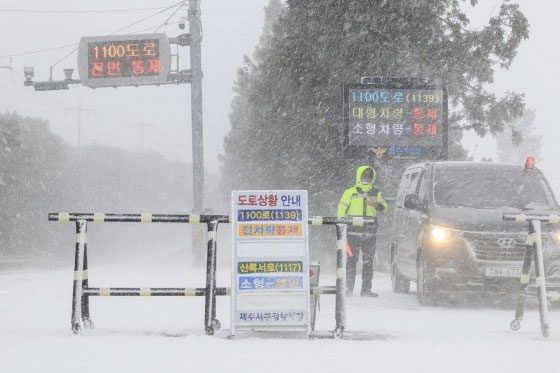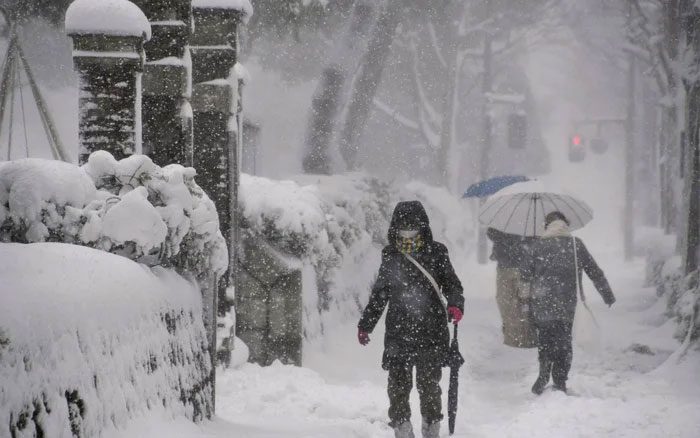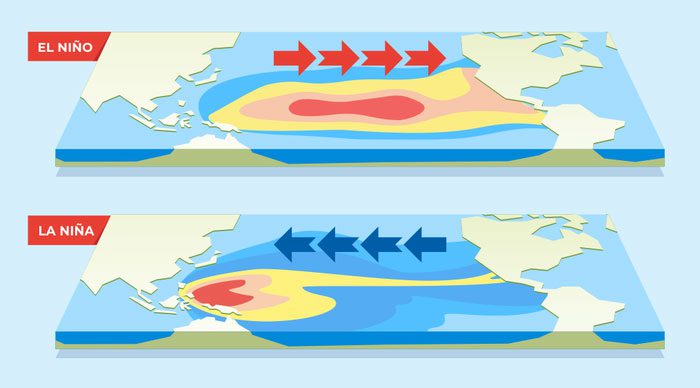Experts predict that extreme weather events will become the “new normal” in the future, as East Asia experiences record-breaking cold not seen in a decade.
This Lunar New Year, East Asia is facing record low temperatures, with deep freezes unprecedented in the last 10 years. Frost and heavy snowfall have disrupted travel throughout the holiday period in South Korea and China.
On Thursday (January 26), the capital of South Korea, Seoul, issued warnings about a “cold wave” – with temperatures dropping below minus 15 degrees Celsius (5 degrees Fahrenheit) for two consecutive days. On January 25, morning temperatures in Seoul plunged to a low of minus 17.3 degrees Celsius, the coldest recorded so far this winter.
In the popular tourist destination of Jeju Island, severe weather has led to the cancellation of 476 flights, while passenger ferries have been forced to remain docked due to high waves, stranding approximately 43,000 travelers, according to the Jeju regional office of the South Korean Ministry of Land, Infrastructure and Transport.

Traffic police directing vehicles on Jeju Island on January 24.
In the north, North Korean authorities have also warned about severe weather conditions as the cold wave sweeps across the Korean Peninsula. State media reports that temperatures in some areas of North Korea are expected to drop below minus 30 degrees Celsius.
Meanwhile, in Japan, hundreds of domestic flights were canceled on January 24-25 due to heavy snowfall and strong winds impairing visibility. Major airlines Japan Airlines and All Nippon Airways canceled a total of 229 flights.
Many regions in central and northern Japan have been battling temperatures at their lowest in a decade, along with heavy snowfall. Besides air travel, both rail and road transport have been affected, with some drivers stranded in snow for hours. Authorities have warned residents in the hardest-hit areas against traveling unless absolutely necessary. At least four fatalities have been reported due to the extreme cold and icy conditions.

Snow coverage in Kanazawa, Ishikawa Prefecture, Japan.
The Chinese Meteorological Administration has also forecast a significant drop in temperatures across various regions and issued a green alert for a cold wave on January 23 – the lowest level in their four-tier warning system.
Meteorologists report that Mohe, the northernmost city in China, recorded temperatures dropping to minus 53 degrees Celsius on January 22 – the coldest ever recorded. Local authorities noted that freezing fog – a weather phenomenon that occurs only in extreme cold when moisture in the air remains in liquid form – could also appear in the city last week.
“New Normal”
“Cold air from the Arctic has surged directly to South Korea after passing through Russia and China,” said Woo Jin-kyu, spokesperson for the Korea Meteorological Administration, in an interview with CNN. Woo stated that this extreme weather – extreme heat in summer and extreme cold in winter – can be considered one of the signals of climate change.
Yeh Sang-wook, a climate professor at Hanyang University in Seoul, believes that the extreme cold wave on the Korean Peninsula is due to Arctic winds from Siberia, adding that this year’s cold snap in South Korea is partly due to melting ice caps in the Arctic due to global warming.
He said: “There has been a record melt last year and this year. As sea ice melts, the ocean expands, putting more moisture into the air, leading to more snow in the north.”

During La Niña, sea surface temperatures in the eastern equatorial Pacific are typically lower than normal by 3–5 °C. The occurrence of La Niña usually lasts for more than five months. El Niño and La Niña can indicate global weather changes.
As climate change worsens, this region will face even more severe cold weather in the future, he noted.
“There is no (other explanation). Climate change is indeed deepening, and there is a consensus among global scientists that such freezing phenomena will become worse in the future.”
Kevin Trenberth from the National Center for Atmospheric Research (NCAR) agrees that “extreme weather events are the new normal”, adding, “we can certainly predict that extreme weather events will be worse than before.”
He also pointed out that the cyclical patterns of El Niño and La Niña in the Pacific affect weather globally. According to him, La Niña, which typically has a cooling effect on global temperatures, is one of the causes of the current cold snap.
“There is certainly a significant natural variability occurring in the weather, but… we often hear about the El Niño phenomenon, and currently, we are in a La Niña phase. And that certainly influences the types of patterns that are likely to occur.”


















































